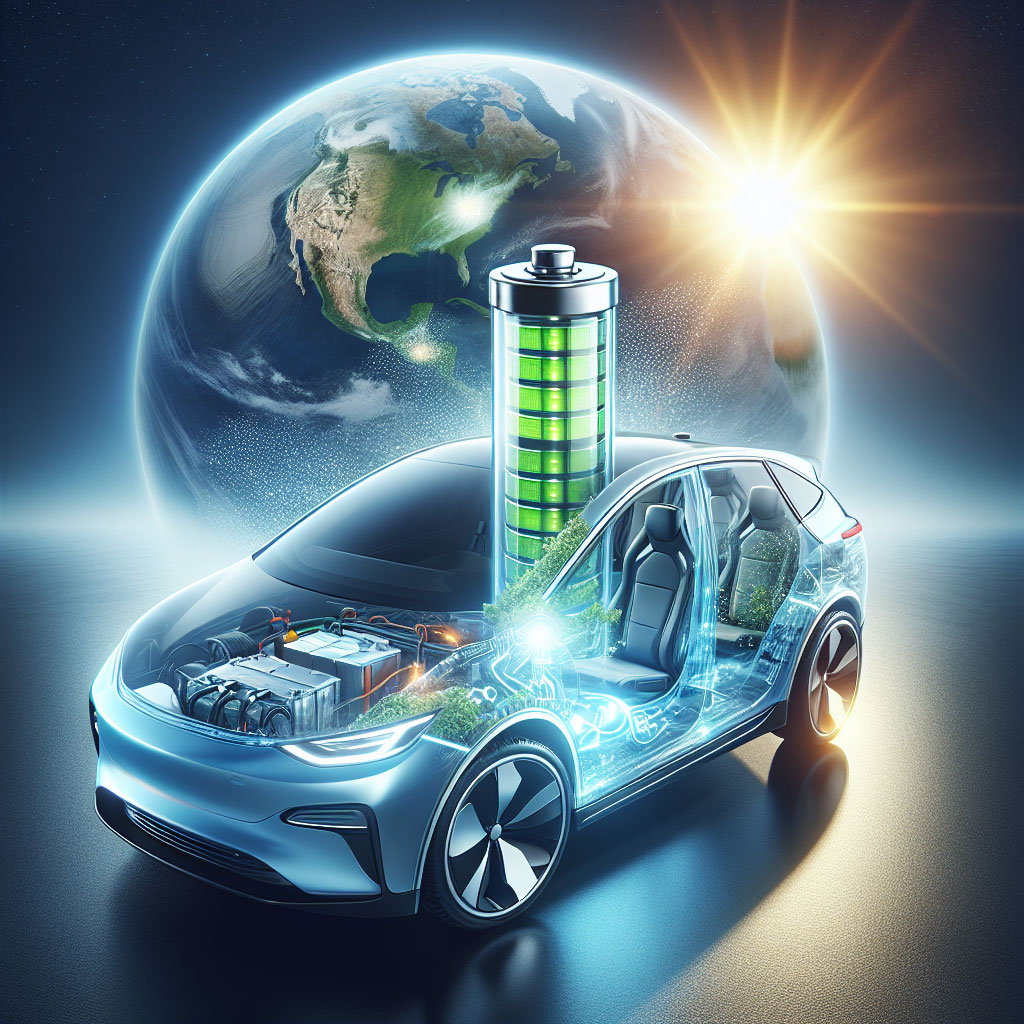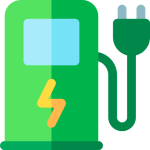
The battery pack is the heart and the most valuable component of your electric vehicle. While manufacturers provide extensive warranties (typically 8 years or $160,000 km in Australia), every EV owner wants to know the secret to maintaining maximum range and value for the life of the car. The key lies in understanding and controlling two factors: the State of Charge (SoC) and the charging speed.
The good news is that modern Battery Management Systems (BMS) handle the heavy lifting. However, by adopting smarter charging habits, particularly the widely recommended 80% rule, you can play an active role in maximising EV battery health charging and ensuring your investment performs optimally for years to come.2
🔑 The Golden Rule: Why EV Battery Health Charging Prefers 80%
The recommendation to avoid charging your battery above 80% for daily use stems from the fundamental science of lithium-ion batteries.
1. Reducing Internal Stress
The lithium-ion cells in your battery pack are most stressed when they are either completely empty (below 20%) or completely full (above 80%).
- High SoC Stress: When a battery is near 100% charge, the lithium ions are highly concentrated and packed tightly at one end of the cell. This creates mechanical and electrical stress, which slowly degrades the cell structure over time.
- Optimal Zone: By keeping the charge level within the 20% to 80% range, you operate the battery in its chemical “sweet spot.” This reduces internal resistance and minimises the degradation that leads to capacity loss.
2. The Regenerative Braking Buffer
This is a practical benefit that impacts your daily driving efficiency:
- Regen Function: Regenerative braking is the process where your EV converts kinetic energy from slowing down back into usable electricity, sending it back to the battery.
- The Problem with 100%: If your battery is already at 100%, there is no room to store the energy recovered by regenerative braking. This means the car must use friction brakes, wasting energy and accelerating brake wear.
- The Solution: Charging to 80% leaves a crucial 20% buffer, ensuring you can fully utilise regenerative braking from the moment you leave your driveway, boosting efficiency and range.
Practical Application: Most modern EVs sold in Australia allow you to easily set your daily charging limit to 80% through the car’s infotainment screen or the manufacturer’s mobile app. You should only override this setting to charge to 100% just before embarking on a long road trip where the full range is genuinely needed.
💨 The Speed Factor: Understanding the DC Fast Charging Effect
DC (Level 3) fast chargers are essential for long-distance travel, but their convenience comes with a trade-off that impacts EV battery health charging.
The Science of High Power and Heat
As explained in previous articles, DC fast charging delivers massive power (often 50 \ kW} to 350 kW) directly to the battery, bypassing the onboard charger. This rapid transfer of energy generates significant heat within the battery pack.
- Thermal Stress: Lithium-ion batteries are sensitive to high temperatures. While every modern EV has a sophisticated Battery Management System (BMS) with thermal cooling (liquid cooling) to manage this heat, frequent exposure to high temperatures accelerates chemical degradation processes.
- Electrode Strain: The sheer force of the high-current flow puts increased mechanical stress on the electrodes inside the cells, contributing to a slightly faster rate of capacity fade compared to slower charging.
Real-World Impact (The Minimal Difference)
It is important to keep the DC fast charging effect in perspective. Research suggests that the difference in degradation between a car primarily charged with Level 2 AC and one that frequently uses DC fast charging is generally minor—often less than a few per cent capacity difference over several years.
The Golden Rule for DC Fast Charging:
- Limit Frequency: Reserve DC fast charging for road trips and genuine necessity, not for daily use.
- Stick to 80%: When using a public DC charger, always unplug at 80%. Beyond this point, the charger significantly slows down to protect the battery, making the last 20% incredibly inefficient for your time and often inconsiderate to others waiting.
🏡 Why Slower AC Charging is Best for Daily Longevity
The key to long-term EV battery health charging is making Level 2 AC charging your primary method. This is why many experienced EV owners actually prefer the slower pace of home charging.
1. Minimal Heat Generation
Level 2 AC charging (at 7 kW to 22 kW ) is far gentler on the battery. Since the conversion from AC to DC happens via the car’s On-Board Charger (OBC), the current flow into the battery is steady and controlled, resulting in minimal heat production.
- Consistency: Slower, more consistent charging cycles keep the battery within its optimal operating temperature range, protecting the delicate internal chemistry.
2. Time Management
Level 2 charging perfectly aligns with the Australian lifestyle:
- Overnight Charging: You plug in when you get home, and the car charges while you sleep (or during cheap off-peak hours). You wake up to a car at 80% charge (or 100% if scheduled for a trip), ready to go. The time taken is irrelevant because you weren’t waiting for it.
- Solar Optimisation: A Level 2 smart charger can be programmed to use only excess solar energy during the day, achieving ‘free’ charging without adding strain to the battery.
This routine—charging slowly overnight, within the 20-80% window, and often using cheaper electricity—is hands-down the best practice for battery longevity and cost management.
🏁 Conclusion: Your Battery, Your Habits
Protecting your EV battery comes down to three key habits:
- The 80% Rule: Use your vehicle’s settings to limit daily charging to 80% or 90% for LFP batteries, as per the manufacturer’s manual).
- Avoid Extremes: Minimise time spent at 100% and avoid routinely dropping below 20% SoC.
- Prioritise AC: Make a Level 2 AC wall charger your primary, daily charging method.
The slight degradation caused by occasional DC fast charging is a small price to pay for the utility of long-distance travel. By making smart, slow charging your routine, you are making the best possible investment in the long-term health and performance of your EV.
Make the right choice for your EV’s long-term health. EV evolution offers a range of Level 2 Smart Wall Chargers, featuring app control and scheduling functions to effortlessly maintain the perfect 80% charge every night.
FAQs
Does charging to 100% once in a while significantly harm the battery?
No – charging to 100% occasionally for a long trip is fine. The concern is frequent or prolonged stays at 100%, which increase stress. Use 100% sparingly and, if possible, charge to that level shortly before you depart so the battery spends minimal time at full SoC.
How often can I use DC fast chargers without harming the battery?
There’s no one-size-fits-all number – it depends on battery chemistry, thermal management and how high the charging power is. As a rule, limit DC fast charging to trips and occasions where you need it. If fast charging is part of your daily routine, expect somewhat faster capacity decline than if you mainly use AC charging.
Are LFP batteries immune to degradation?
No battery chemistry is immune, but LFP batteries are typically more tolerant of high SoC and more cycle-stable than nickel-based chemistries. Follow the manufacturer’s guidance for LFP-equipped vehicles; some recommend higher daily limits (e.g. 90%) than for NMC/NCA packs.
Does charging speed or ambient temperature matter more?
Both matter. Fast charging increases internal temperatures and stress; high ambient temperatures exacerbate that effect. Managing both – using slower charging when convenient and avoiding charging in extreme heat – gives the best protection.
Can software updates improve battery life?
Yes. Manufacturers frequently release BMS and charging optimisations that can improve charge management, thermal control and longevity. Keep your vehicle software up to date.
About EV Evolution
EV Evolution is the leading online platform dedicated to Australian electric vehicle owners and enthusiasts. We foster a vibrant community, delivering essential EV news and insights, and enhancing user engagement through our innovative, AI-powered chatbot for dynamic discussions. Our mission is to empower Australian electric vehicle owners and enthusiasts by fostering a vibrant, AI-driven online community that connects, informs, and advances the nation’s electric vehicle landscape.




